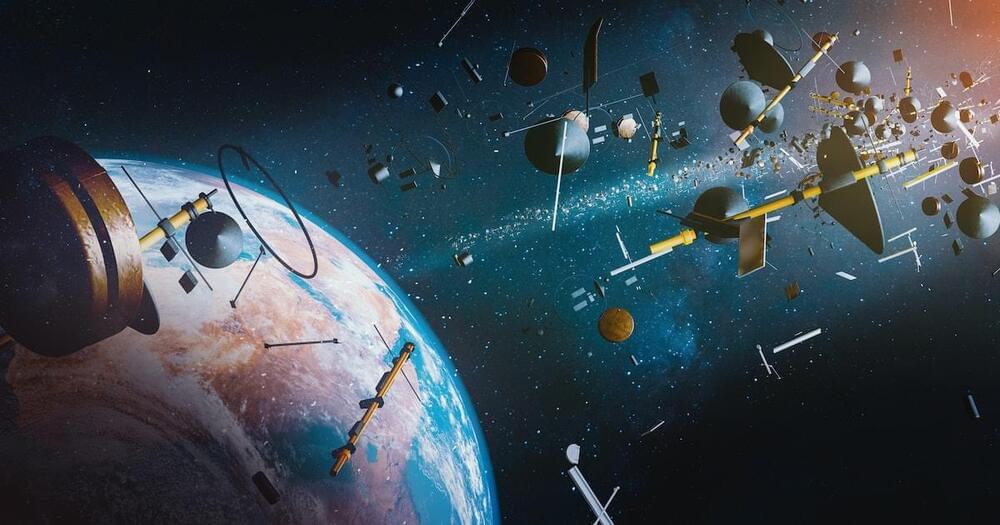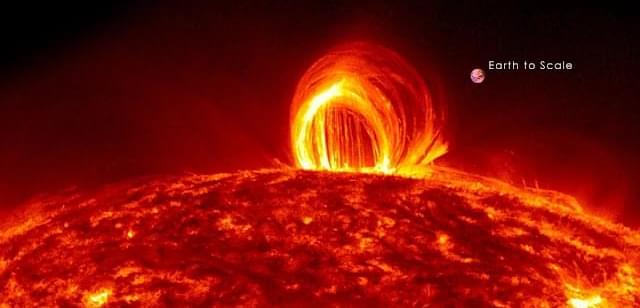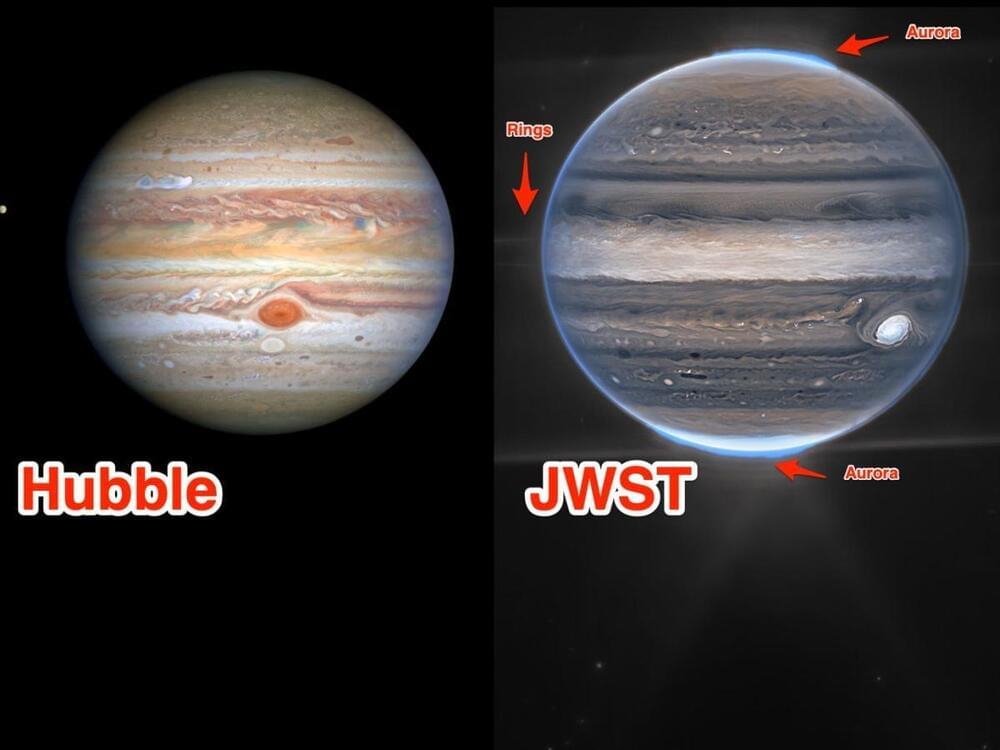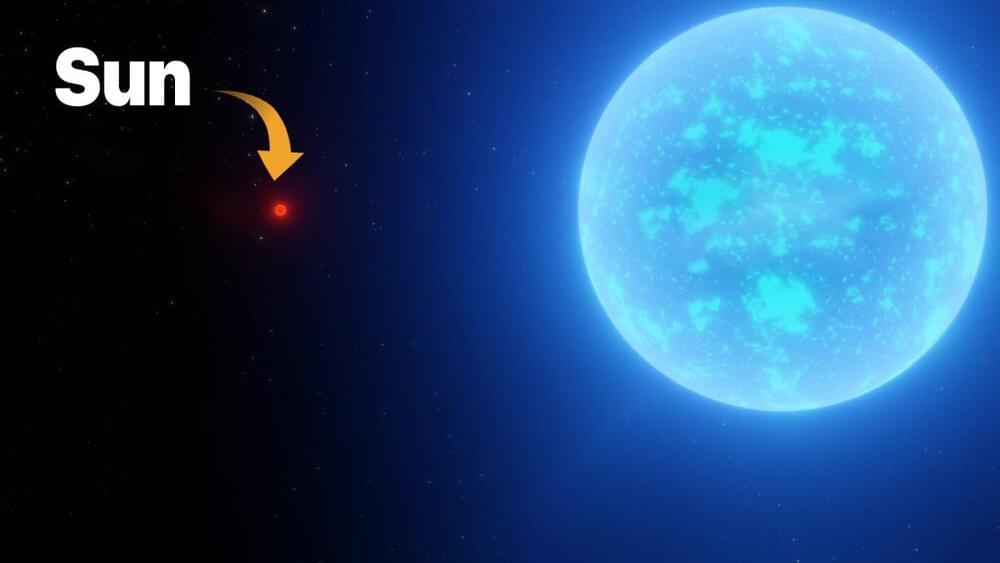A new study has estimated the chance of causalities from falling rocket parts over the next ten years.




While Hubble can spot Jupiter’s auroras when capturing ultraviolet light, Webb’s infrared image shows the auroras in greater detail.
“I’ve never seen anything like that before,” O’Donoghue said, adding, “I can’t quite believe we’ve got that shot from such a vast distance. It really speaks to how effective JWST is at picking up faint light.”
Webb’s new images of Jupiter show two of the planet’s moons, Amalthea and Adrastea, the smaller of the two, measures just 12 miles across, according to NASA. In comparison, Hubble’s image of Jupiter shows the planet’s ocean-filled moon, Europa, which measures 1,940 miles across.

What goes on inside planets like Neptune and Uranus? To find out, an international team headed by the Helmholtz-Zentrum Dresden-Rossendorf (HZDR), the University of Rostock and France’s École Polytechnique conducted a novel experiment. They fired a laser at a thin film of simple PET plastic and investigated what happened using intensive laser flashes. One result was that the researchers were able to confirm their earlier thesis that it really does rain diamonds inside the ice giants at the periphery of our solar system. And another was that this method could establish a new way of producing nanodiamonds, which are needed, for example, for highly-sensitive quantum sensors. The group has presented its findings in the journal Science Advances.
The conditions in the interior of icy giant planets like Neptune and Uranus are extreme: temperatures reach several thousand degrees Celsius, and the pressure is millions of times greater than in the Earth’s atmosphere. Nonetheless, states like this can be simulated briefly in the lab: powerful laser flashes hit a film-like material sample, heat it up to 6,000 degrees Celsius for the blink of an eye and generate a shock wave that compresses the material for a few nanoseconds to a million times the atmospheric pressure.
“Up to now, we used hydrocarbon films for these kinds of experiment,” explains Dominik Kraus, physicist at HZDR and professor at the University of Rostock. “And we discovered that this extreme pressure produced tiny diamonds, known as nanodiamonds.”

The most massive star known by astronomers is truly of gargantuan proportions. Dubbed R136a1, this is the most massive and luminous star ever discovered in the cosmos. Additionally, it belongs to the Large Magellanic Cloud and is one of the hottest stars out there, and it is very, very different than our Sun.
Astronomers have obtained the sharpest image ever of star R136a1, the most massive known star in the Universe, with the 8.1-meter Gemini South telescope in Chile, part of the International Gemini Observatory operated by NSF’s NOIRLab. Researchers at NOIRLab, led by Venu Kalari, challenge our understanding of the most massive stars and suggest their mass may be lower than previously believed.
The formation of the biggest stars – those with 100 times the mass of the Sun – is still a mystery to astronomers. Observing these giants, which normally reside within dust-shrouded star clusters, is challenging. A giant star’s fuel reserves are depleted in less than a million years. Compared with our Sun, which has a lifespan of about 10 billion years, ours is less than halfway through. Individual massive stars in clusters are difficult to distinguish due to their densely packed nature, short lifetimes, and vast astronomical distances.

Scientists had previously theorised that extremely high pressure and temperatures turn hydrogen and carbon into solid diamonds thousands of kilometres below the surface of the ice giants.
Now new research, published in Science Advances, inserted oxygen into the mix, finding that “diamond rain” could be more common than thought.
Ice giants like Neptune and Uranus are thought to be the most common form of planet outside our Solar System, which means diamond rain could be occurring across the universe.
To try out our new course (and many others on math and science), go to https://brilliant.org/sabine. You can get started for free, and the first 200 will get 20% off the annual premium subscription.
Albert Einstein taught us that space and time belong together to a common entity: space-time. This means that time becomes a dimension, similar to space, and has profound consequences for the nature of time. Most importantly it leads to what has been called the block universe, a universe in which all moments of time exist the same way together. The future, the present, and the past are the same, it is just our perception that suggests otherwise.
💌 Sign up for my weekly science newsletter. It’s free! ➜ http://sabinehossenfelder.com/
👉 Support me on Patreon ➜ https://www.patreon.com/Sabine.
📖 My new book “Existential Physics” is coming out in August ➜ http://existentialphysics.com/
0:00 Intro.
00:58 Space-time.
02:09 Space-time diagrams.
03:40 Special Relativity.
05:05 The Relativity of Simultaneity.
10:36 The Block Universe.
12:46 The if’s and but’s.
14:50 Sponsor Message
NASA’s new moon rocket sprang another dangerous fuel leak Saturday, forcing launch controllers to call off their second attempt to send a crew capsule into lunar orbit with test dummies.
The first attempt earlier in the week was also marred by escaping hydrogen, but those leaks were elsewhere on the 322-foot (98-meter) rocket, the most powerful ever built by NASA.
NASA Administrator Bill Nelson said repair work could bump the launch into October.


The new research provides a more complete picture of how diamond rain forms on other planets.
Researchers have discovered that “diamond rain,” unique precipitation that has long been speculated to occur on icy giant planets, may occur more frequently than previously believed.
To learn more about the circumstances on the icy giant planets Neptune and Uranus, a group of researchers from Germany and France has created an intriguing experiment, according to an article published by Physic.org on Friday.
A team of researchers have discovered that “diamond rain,” unique precipitation that has long been speculated to occur on ice giant planets, may occur more frequently than previously believed.